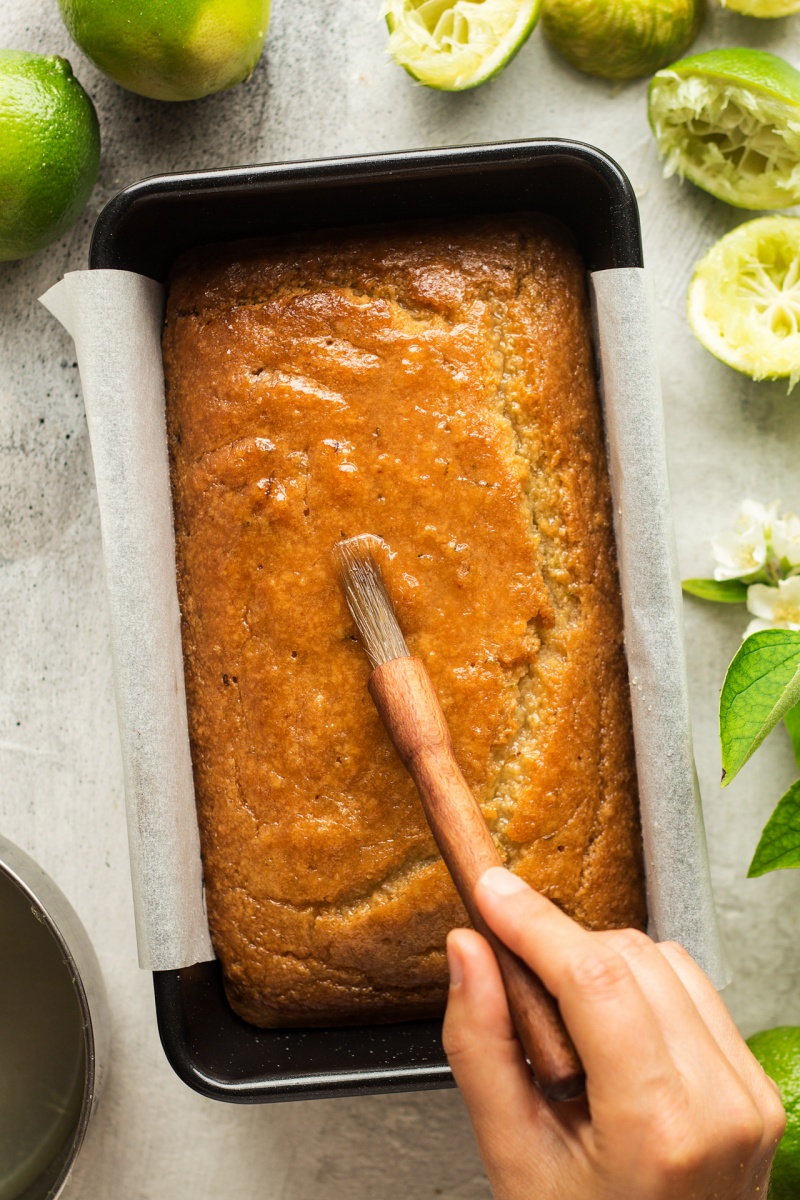
If my carefully stylised photos have fooled you into thinking that all my cakes always come out on point, think again. This coconut and lime drizzle cake was a true labour of love. Apart from some small alterations (I mainly just reduced the amount of coconut oil needed), I based it on my lemon drizzle cake that many of you loved, so I only needed to do one test bake, which went swimmingly and I was ready to shoot. Or so I thought…
On the day of shooting, I had lots on my mind (we are getting married on Monday and even though it’s a very low key wedding, there are still bits and pieces you need to take care of and many of them come as a complete surprise, as I’ve never been the one to know any of the wedding conventions or trends…) I made the cake and was getting my camera ready, but when I took it out of the oven, my heart sank in unison with the cake itself.
Slowly the panic crept in. What have I done wrong? I don’t understand, I made that cake so many times before and so many people have made it and it definitely works. Well, it took me a while to retrace my steps but what I did was this. I was distracted and didn’t measure the baking powder properly, I was using half a teaspoon measuring spoons and I could not quite remember if I put one or two of them in, so I added another for a good measure and it was heaped too! Rookie error. And then I forgot about baking soda and added it at the very end and clearly didn’t mix the batter well enough, which would explain the tiny little pockets of bitterness that ran through an otherwise edible but not quite enjoyable cake. Ugh! I was gutted. What to do, what to do? I had no limes left and if I went out to get limes, I would have no light left to photograph in…
I sent a message to my friend Sydney who lives nearby, hoping that she might be out food shopping. She was on her way to a doctor’s appointment and was passing by a greengrocer, so she kindly brought me more limes. I was so grateful and I was sure I could still do my photos in time. I made another cake, this time with care and it turned out beautifully. I started photographing, but after a few takes grey clouds moved in, with an occasional sun ray peaking through. The light was horrible and wasn’t doing my cake justice. I persevered, trying everything I could think of, but the results just weren’t good enough.
As I wasn’t sure if the said cake would look appetising the next morning, I had no choice but to bake one more cake… I asked Duncan to get more limes (I hate limes so much right now) and some coconut on his way back home and I made yet another cake, ready to style it and photograph it the next day. And cos it was a bit of a frustrating day and I had so much cake lying around, I somehow ate nearly half of the first sunken cake while fretting and getting stressed. At the end of that day I felt a bit rotten and forced myself to go for a run despite a throbbing headache and waaaaay too much sugar in my bloodstream. So in a nutshell, this is what running a food blog for a living looks like some days…
So this recipe definitely works a treat. Trust me, I tested it more times than I intended. Hope you’ll enjoy it and while I might break out in a rash if I see yet another lime being zested or squeezed, I am sure I will return to making it after a period of much needed detox from cake making or eating 😛 .
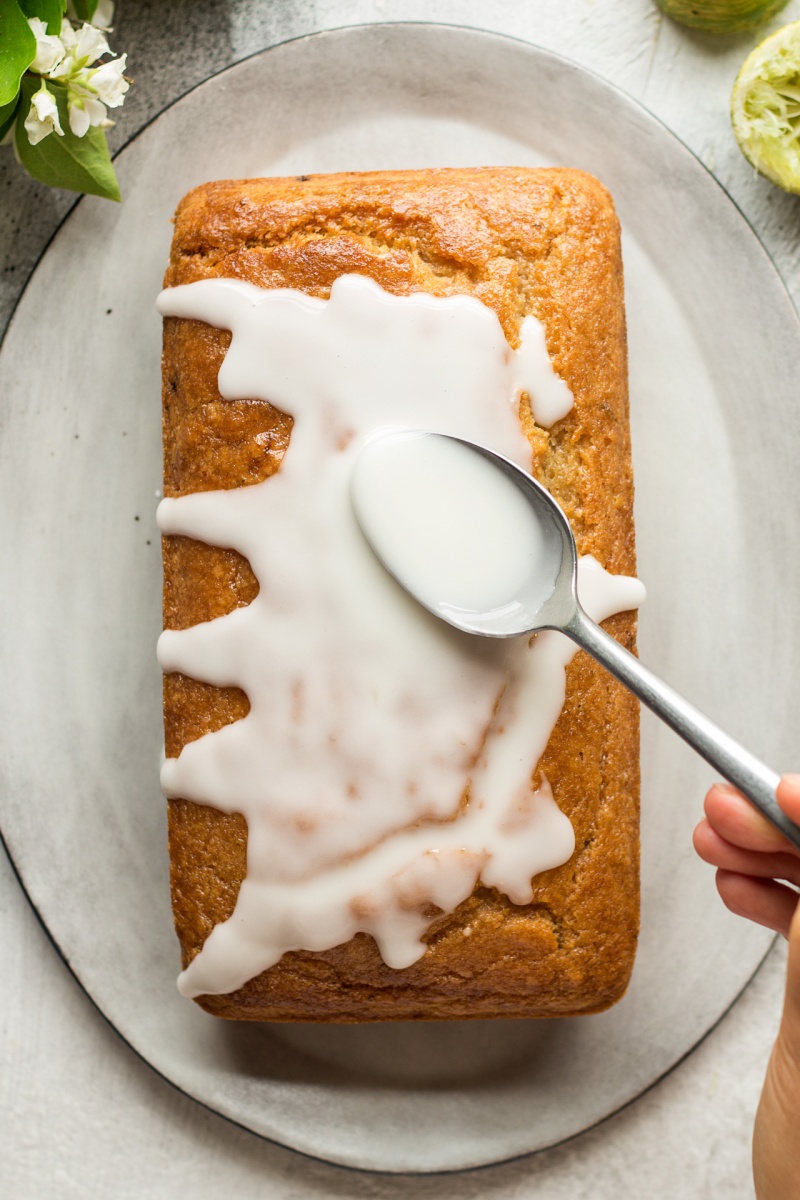
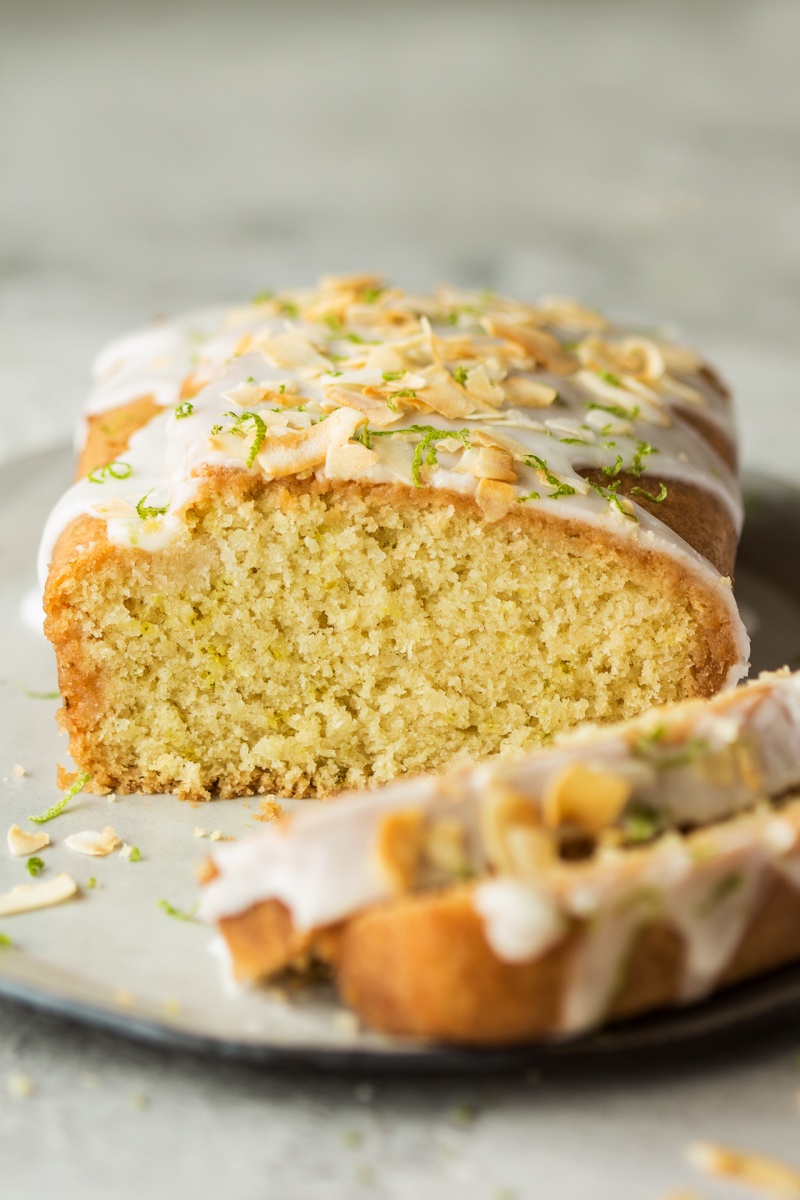
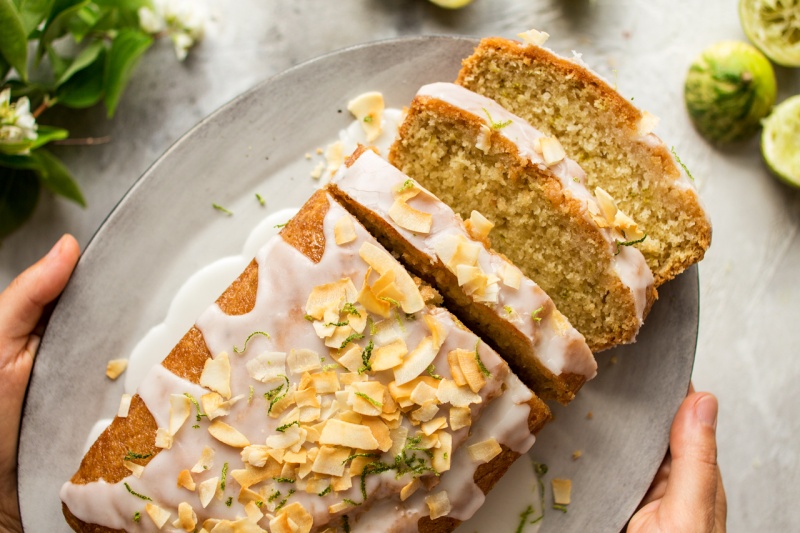
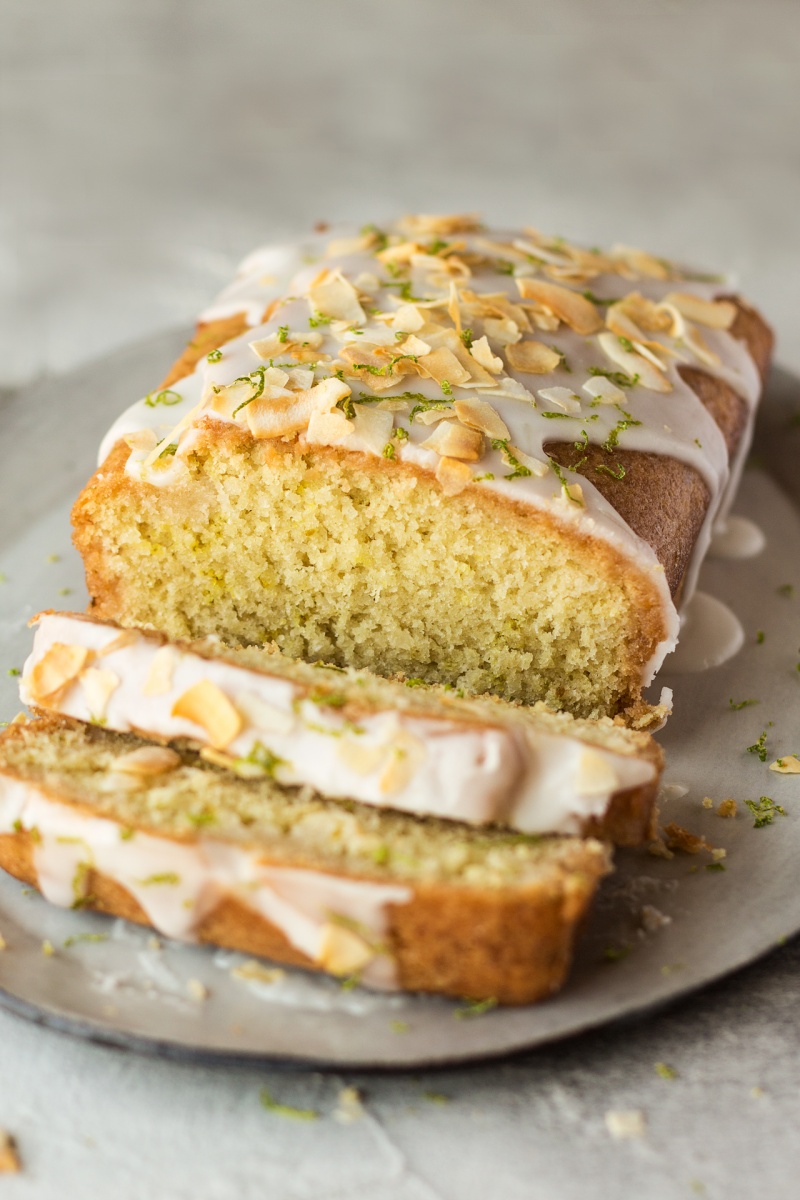
- 240 ml / 1 cup thin plant milk (I used almond), room temperature
- 80 g / 1/3 cup mild coconut oil (measured unmelted)
- 125 g / 2/3 cup caster sugar OR 160 ml / 2/3 cup maple syrup*
- 30 ml / 2 tbsp lime juice (approx. ½ lime)
DRY INGREDIENTS
- zest of 4 limes
- 80 g / 1 cup desiccated coconut, ground up finely in a coffee grinder or food processor
- 210 g / 1¾ cups GF cake flour mix (I used this one) or all purpose white flour, sifted
- 1 tsp baking powder
- ¾ tsp baking soda
LIME SYRUP
- 70 g / 1/3 cup caster sugar (fine sugar) or maple syrup, adjust to taste
- juice of 2 limes (about 90 ml / 6 tbsp juice)
ICING (optional)
- 50-100 g / ½-1 cup icing sugar*
- juice of ½-1 lime
- toasted coconut flakes, to decorate (optional)
- lime zest, to decorate (optional)
- Measure out the plant milk and bring it to room temperature ahead of baking or warm it up to room temperature (do not allow it to get warm as it will melt the sugar in the batter) if you are in a rush.
- Heat up the oven to 180° C (or 160° C fan forced) / 355° F (320° F fan forced). Line a 1 kg / 2 lb tin with a wide strip of baking paper to be able to remove your cake easily.
- Whisk the softened (not melted ideally, although melted works too, but the cake will be a little less fluffy) coconut oil and sugar together with an electric whisk.
- Add in the lime zest, lime juice and room temperature plant milk and mix well with a spatula.
- Next, add in the desiccated coconut. I ground it up a little in my coffee grinder first, but that’s optional.
- In a small bowl, mix the flour with the baking powder and baking soda.
- Finally, place a sieve over the bowl with the wet ingredients and sift through the flour mix until there are no more lumps left.
- Transfer the batter to the prepared baking tin.
- Bake for about 45 minutes, until a toothpick comes out clean and the top is nicely browned.
- Once baked, remove the cake from the tin. Pierce the top with a toothpick in several places to allow the syrup to infuse the cake better. Brush the surface of the hot cake (that’s important as otherwise the syrup will stay on the surface) with syrup several times allowing the syrup to soak into the cake between each go.
- Once cool, drizzle with icing starting from the middle so that it drips down to the sides creating pretty drizzle marks. Finally, sprinkle with toasted coconut flakes and lime zest.
LIME SYRUP
- Place the sugar or maple syrup and lime juice in a small pot over a low heat.
- Bring the contents of the pot to a gentle simmer and cook until the sugar dissolves completely and the syrup thickens a touch. Set aside.
ICING
- Whisk the icing sugar and lime juice in a medium size bowl until fully combined. Add the lime juice gradually to avoid lumps in your icing and to be able to control the consistency of the icing better.
I used a 2 lb / 900 g cake tin of the following dimensions: 18.5cm x 8cm x 6cm (like this). It holds 8 cups / 2000 ml liquid (to the brim), but the batter should fill no more than 2/3 – 3/4 of the 2lb cake tin or else the cake may not raise.

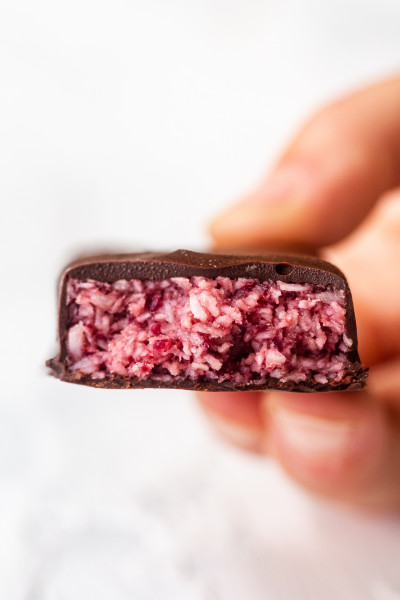

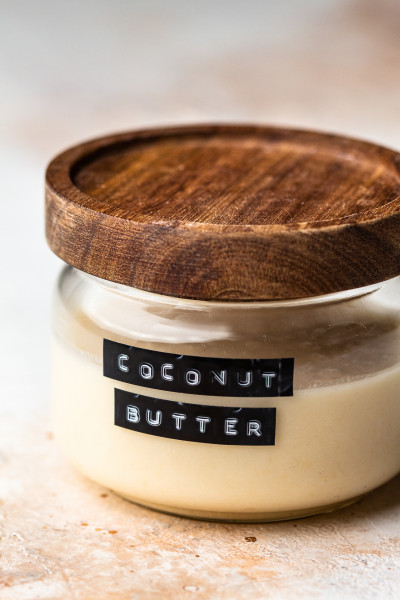

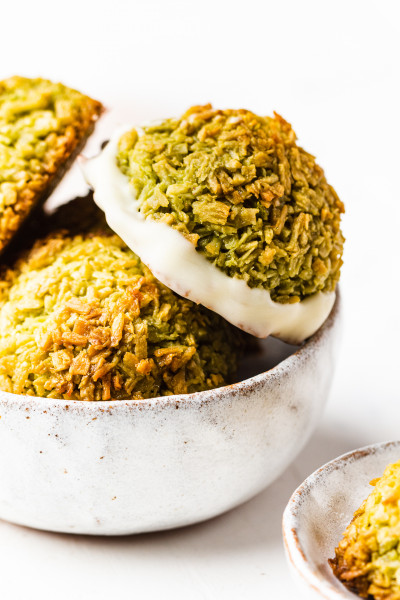
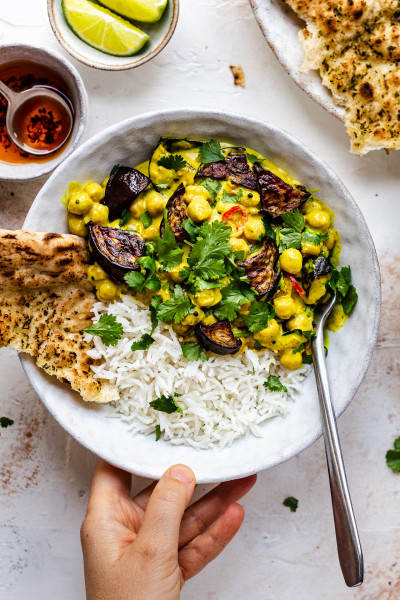
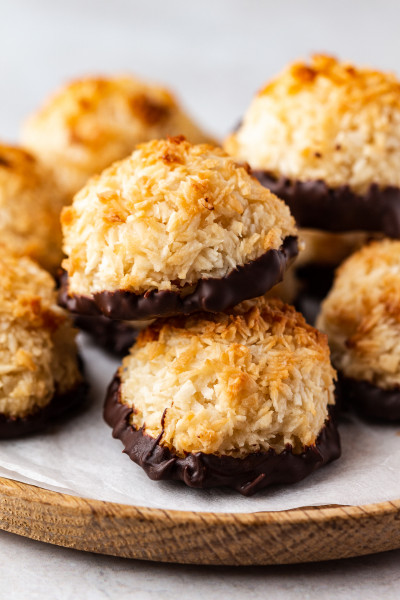
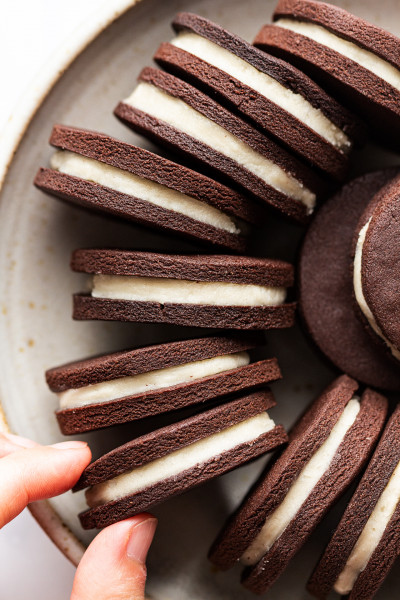
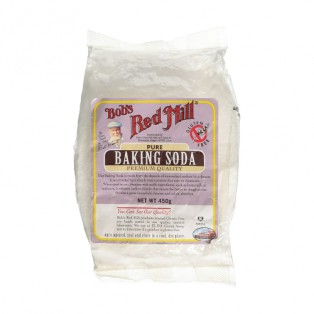

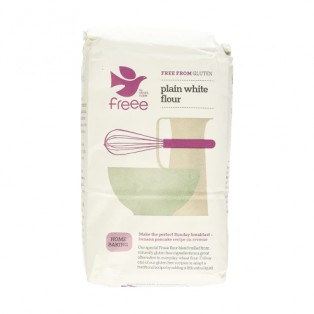
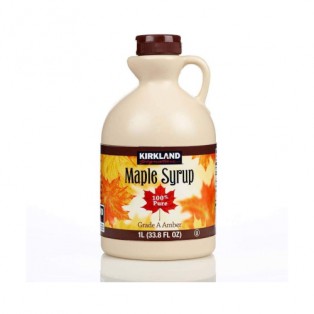
I am sorry, but I have never done this with any of my cakes so I really have no idea. Ania
It's up to you, but I would not. While I sometimes use wholemeal flour in case (carrot cake for example), this cake has a much more delicate crumb so I would stick to plain flour personally. Ania
Can I freeze the vegan coconut and lime cake?
I have not tried but I am pretty sure it will freeze well. Ania
Also, do you think this would bake up well in a burnt tin? (I’d scale up the recipe of course, to ensure there’s enough batter.)
Yes, a bit. White sugar is better at creating a crispy exterior crust. I haven't tried making it in a bunt tin (I assume that's what you mean) so I am not sure, I would recommend using a loaf pan to be safe. Hope this helps! Ania
Aw, thanks, so nice to hear that you love this recipe. I would say (unless you live somewhere really hot), keeping it in an air-tight container on the counter should work well enough - fridge will be okay too but it will make the crumb a little denser due to coconut oil solidifying in the cold. x Ania
That's fantastic, I'm delighted to hear that you enjoyed it. It could possibly work but certainly not without some serious modifications and the texture will be very different - sugar does not only provide sweetness but also moisture and more importantly structure to baked goods. Hope this helps! Ania
One question I did have...I want to try this out as a potential "baby friendly" cake...coconut sugar worked an absolute treat, but what would your thoughts be about trying it with banana instead of sugar? Yay to experiment or nay stay away...?
I'm so glad you enjoy this cake so much but sorry about it not tasting of lime enough. I don't know how many grams the zest amounts to, I'm afraid. I suspect that it's so little that my kitchen scales would not give me a reading. It's better to measure it in volume. According to the internet, an average lime contains about 1.5 to 2 teaspoons lime zest (loosely piled, not pressed) so in this cake you'll need just about 2 tbsp (1 tbsp = 3 tsp) of lime zest. In terms of juice, when buying limes make sure they have thin skin and give a little when pressed with your finger (this usually means juicy) and before you cut, roll it hard against your work bench pressing with your hand on top to loosen up the flesh fibers and release more juice. Also, this batter contains so eggs so you should be able to taste just a tiny bit to make sure you are happy. I hope this is helpful. Namaste! x Ania
Any thoughts 🌻?
It sounds to me that it might have been overbaked and therefore it dried out too much. Round tins require very different baking time to loaf pans. This recipe was created and tested in the form of a loaf so if you are making changes without compensating with necessary adjustments, you need to accept that the outcome might not be quite as good as when you follow the actual recipe. Ania